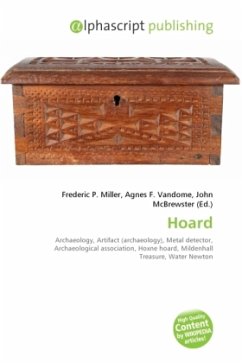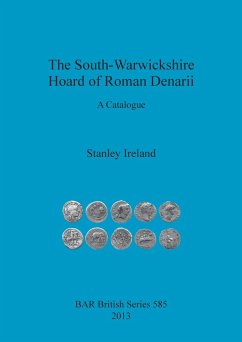
Hoard
Versandkostenfrei!
Versandfertig in 6-10 Tagen
23,99 €
inkl. MwSt.

PAYBACK Punkte
12 °P sammeln!
In archaeology, a hoard is a collection of valuable objects or artifacts, sometimes purposely buried in the ground. This would usually be with the intention of later recovery by the hoarder; hoarders sometimes died before retrieving the hoard, and these surviving hoards may be uncovered by metal-detectorists, members of the public and archaeologists much later. Forgetfulness and physical displacement from the location of the hoard may contribute to failing to retrieve it. Hoards provide a useful method of providing dates for artifacts through association as they can usually be assumed to be co...
In archaeology, a hoard is a collection of valuable objects or artifacts, sometimes purposely buried in the ground. This would usually be with the intention of later recovery by the hoarder; hoarders sometimes died before retrieving the hoard, and these surviving hoards may be uncovered by metal-detectorists, members of the public and archaeologists much later. Forgetfulness and physical displacement from the location of the hoard may contribute to failing to retrieve it. Hoards provide a useful method of providing dates for artifacts through association as they can usually be assumed to be contemporary and therefore used in creating chronologies. Hoards can also be considered an indicator of the relative degree of unrest in ancient societies. Thus conditions in 5th century and 6th century Britain spurred the burial of hoards of which the most famous are the Hoxne Hoard, Suffolk; the Mildenhall Treasure, the Fishpool Hoard, Nottinghamshire, the Water Newton hoard, Cambridgeshire,and the Cuerdale Hoard, Lancashire, all preserved in the British Museum.












